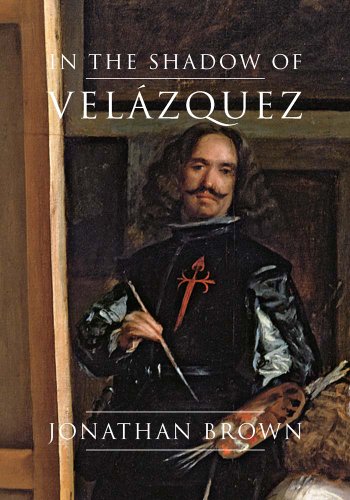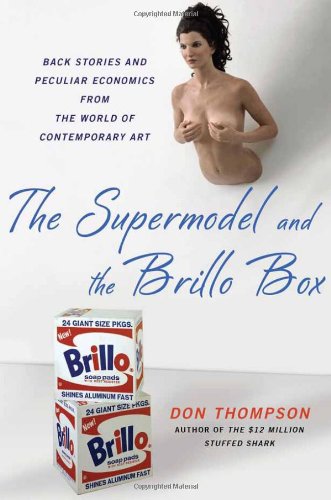 |
| Picture: Amazon |
Brown is a leading specialist in Spanish art, and these lectures reflect on his career in art history. He is cautious about attributing pictures, wary of the personal and financial interests involved. Brown rejected the attribution of the recently-discovered Saint Rufina, but was subsequently persuaded of its authorship. His remarks about its minor significance and 'fair' condition (Santa Ruina, he says, a little unfairly) look like sour grapes. There are plenty of fine art historians who are not great connoisseurs, and I welcome diversity of approaches to art history, but I find Brown's disdain for the very idea of connoisseurship off-putting and his emphasis on the risk of corruption is close to an ad hominum fallacy.
Much else in the book is of value, however. I especially enjoyed reading about his experiences in Francoist Spain, when there were few tourists and the Prado was dingy and un-visited. Fascinating also to read that his father, a suburban office worker, was a keen collector of abstract impressionism. When the abstract expressionists became too expensive, his parents began to collect Surrealist art; their archive is now at the Getty. His chapter on positivist art history ("Scientific and Rigorous") is also very good, and I share his reservations about the potential for applying scientific rigour to art history. His account of the dominance of Diego Angulo Iñiguez in art historical scholarship in Franoist Spain is a compelling study of academic politics as well as offering insightful remarks about the discipline of art history.
A subsequent chapter on Ribera and El Greco shifts key from biography and method to art history. He explains these artists' workshop practice, noting that both ran factories producing images for the market. It's short but insightful, though dulled for me by my recent reading of longer recent studies on El Greco in particular, which also emphasise his relations with patrons and the market.
I enjoyed reading about Brown's career, and the book provides a window on art historical office politics, but I thought it too short and too unfocused overall. I'd prefer to have seen these chapters incorporated into a quasi-festschrift with contributions from other scholars.
 |
| Picture: Amazon |
Don Thompson The Supermodel and the Brillo Box Palgrave Macmillan 2014 £16.99
This is a journalistic account of the market for contemporary art, but there was little that was new to me. According to the postscript Thompson has had extensive access to art market insiders and has consulted a wide range of sources, but his material is stale. Thompson is an economist, but there is virtually nothing on economics and little analysis. It's a quick read with some interesting anecdotes, but unsatisfying if you've been following media coverage of the contemporary art market for the last few years.
 |
| Picture: Amazon |
Adam Tooze The Deluge: The Great War and the Remaking of Global Order, 1916-1931 Allen Lane 2014 £30
World War I did not resolve great power tensions; it created new and deep political, economic and diplomatic challenges. The failure to address those challenges led eventually back to war, which inevitably colours accounts of the whole inter-war period. One of the many merits of this superb history of the 1920s is that it analyses the period in its own terms, rather than as a series of milestones on the way back to war. Tooze is alert to factors that shaped the politics of that time, and he casts his net wider than most studies of the period, producing an admirable synthesis that pays attention to ideas and interests, to East Asia as well as the European-American core, to the Russian Revolution as well as the famous international treaties and to economics and domestic politics as well as international relations.
World War I did not resolve great power tensions; it created new and deep political, economic and diplomatic challenges. The failure to address those challenges led eventually back to war, which inevitably colours accounts of the whole inter-war period. One of the many merits of this superb history of the 1920s is that it analyses the period in its own terms, rather than as a series of milestones on the way back to war. Tooze is alert to factors that shaped the politics of that time, and he casts his net wider than most studies of the period, producing an admirable synthesis that pays attention to ideas and interests, to East Asia as well as the European-American core, to the Russian Revolution as well as the famous international treaties and to economics and domestic politics as well as international relations.
Tooze incorporates revisionist scholarship that will be familiar to specialists, but perhaps less so to the general reader. Clemenceau appears more sympathetic than his popular image, and Woodrow Wilson much less so - rightful revisions in my view. Clemenceau was painted by Manet and was a friend of Monet; he can't have been all bad! Tooze depicts Wilson less as a starry-eyed idealist than as a realist seeking to augment America's power in the world, which is another astute judgment.
Tooze's focus on east Asia may reflect the geopolitics of our own time, but it redresses the balance of more Eurocentric accounts of the period. I am least familiar with this history, and I found these parts among the most rewarding. One reservation is that in my view Tooze underestimates the impact of Soviet communism. He is alive to this risk, and the Russian Revolution and its effects are important in his narrative. But its impact on western rulers and its inspiration to both workers at home and to colonies abroad is in my view more important than Tooze credits.
Tooze's focus on east Asia may reflect the geopolitics of our own time, but it redresses the balance of more Eurocentric accounts of the period. I am least familiar with this history, and I found these parts among the most rewarding. One reservation is that in my view Tooze underestimates the impact of Soviet communism. He is alive to this risk, and the Russian Revolution and its effects are important in his narrative. But its impact on western rulers and its inspiration to both workers at home and to colonies abroad is in my view more important than Tooze credits.
I agree with Tooze that America's deflationary drive of the 1920s is "probably the most underrated event in twentieth-century world history" (p. 354). Poland, Austria and Germany became basket cases. The UK and US successfully reversed the effects of wartime inflation, albeit at high cost. France, Italy and Japan were among many countries in the middle, settling for half-hearted stablilisation. German hyperinflation was dramatic and memorable, and it is stamped on the historical memory. Deflation seems less immediately harmful, but it was devastating. It's a tragic example of the impact of wrong-headed economic ideas. Other historians have addressed this, and I think it's better understood by economists, but its importance in inter-war history has still not received the recognition it deserves.
This is one of my 'books of the year'. It's slow in parts, and I'd like to have seen more direct discussion of historical debates to supplement the narrative, but it's an excellent synthetic history.
This is one of my 'books of the year'. It's slow in parts, and I'd like to have seen more direct discussion of historical debates to supplement the narrative, but it's an excellent synthetic history.
 |
| Picture: Amazon |
Alex Bellos Alex Through the Looking-Glass: How life reflects numbers and numbers reflect life Bloomsbury 2014 £18.99
If you read one maths book this year, make it this one! This is a fabulous and compelling book driven by anecdotes by adding gradually more analytic detail. Chapters cover topics like the reason why numbers reported in the newspaper or in a set of accounts (of any digit length) are most likely to begin with '1' and least likely '9', and how that's used to catch fraudsters; and the cross-cultural prevalence of deep-seated irrational beliefs about numbers, such as how people see odd numbers as male and even as female.
It's designed for the layman, but you'll enjoy it even if you have a little mathematics. The beauty of this book is the way that it manages to engage different audiences. Everyone from advanced mathematician to complete math-phobe will enjoy the histories and stories. Everyone in between those extremes will get something different from his non-technical elaboration.
If you read one maths book this year, make it this one! This is a fabulous and compelling book driven by anecdotes by adding gradually more analytic detail. Chapters cover topics like the reason why numbers reported in the newspaper or in a set of accounts (of any digit length) are most likely to begin with '1' and least likely '9', and how that's used to catch fraudsters; and the cross-cultural prevalence of deep-seated irrational beliefs about numbers, such as how people see odd numbers as male and even as female.
It's designed for the layman, but you'll enjoy it even if you have a little mathematics. The beauty of this book is the way that it manages to engage different audiences. Everyone from advanced mathematician to complete math-phobe will enjoy the histories and stories. Everyone in between those extremes will get something different from his non-technical elaboration.
 |
| Picture: Amazon |
Adam Phillips Becoming Freud: The Making of a Psychoanalyst Yale University Press 2014 £18.99
Another great book in Yale's new Jewish Lives series. I'm not especially interested in Freud's Jewishness, but I am fascinated by Freud and I'm a big fan of Adam Phillips'. This short book focuses more on Freud's professional and intellectual mentors than his family for, as Phillips notes, we know little about his family and ironically especially little about his mother.
Phillips tells us that Freud "had the courage of his affinities" (p. 69), passionately pursuing people he was drawn towards and often dropping them later. He reveals the sources of Freud's ideas in the fizzling intellectual centres of Paris of Vienna at the end of the nineteenth century, culminating in a series of brilliant and revolutionary studies published in the decade hinging around 1900, from Studies in Hysteria in 1895 to Three Essays on the Theory of Sexuality in 1905, which bracket The Interpretation of Dreams which was published in 1900.
Freud himself was sceptical about biography. He wrote some biographical studies, but they are really rather bad. He has in my view been ill-served by rather hagiographic biographers. His sidekick Ernest Jones wrote the classic biography, and more recently the Freudian historian Peter Gay wrote another. Gay's is very good, but he is clearly most smitten with his subject. Phillips brings the perspective of a psychoanalyst to this short study. I enjoyed it immensely, as I enjoy all of Phillips' many books.
No comments:
Post a Comment